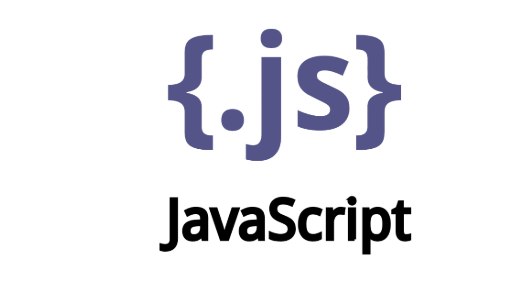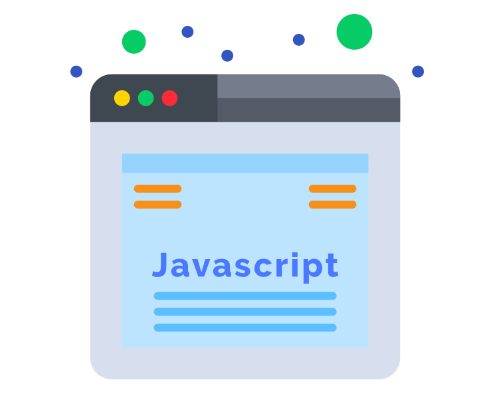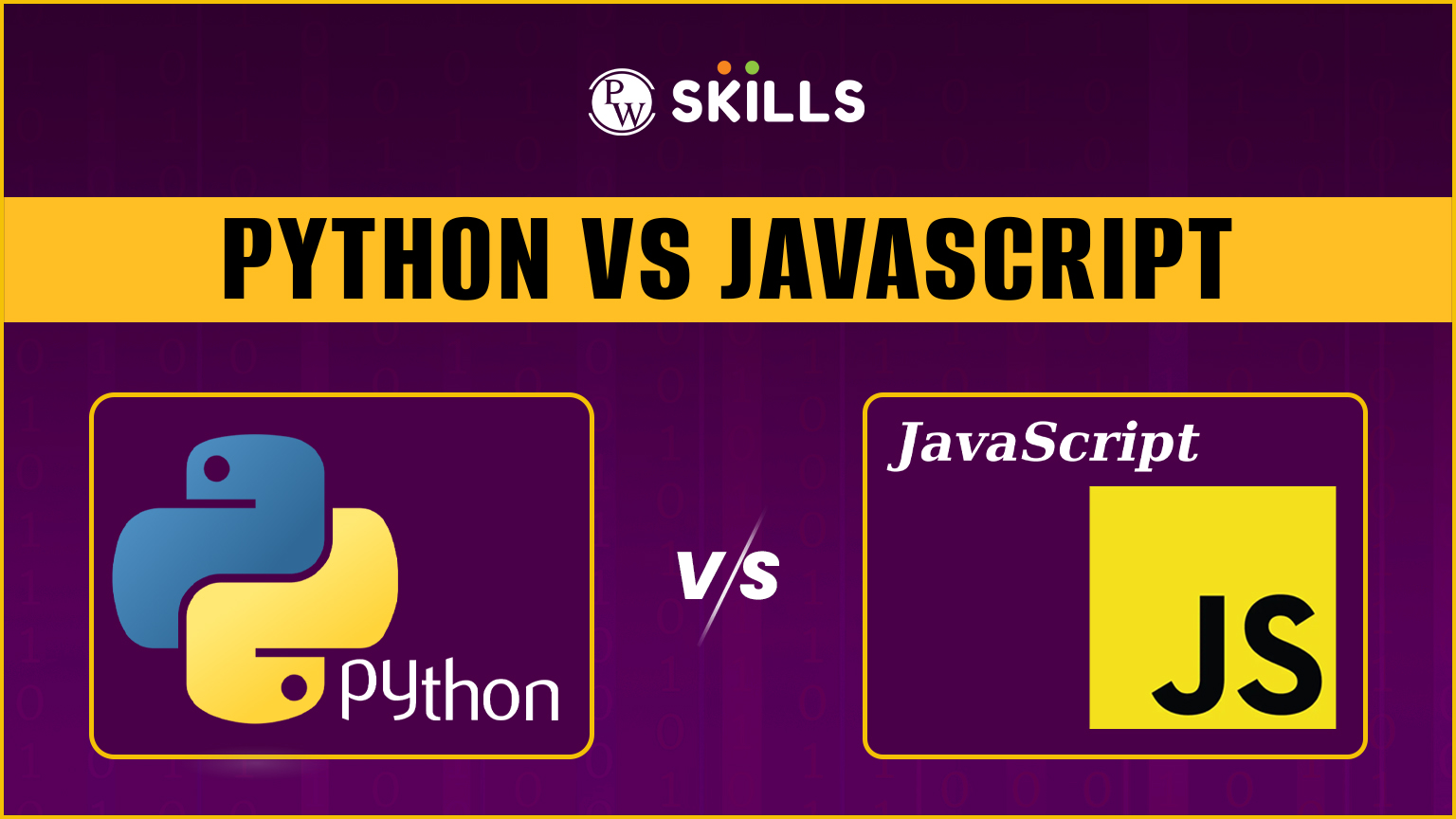Python vs Javascript is an extremely powerful programming language used for a wide range of applications. Python is a broad programming language and Javascript is a scripting language used mainly for web development applications. Both these languages are always high in demand in the tech world.
Python is a high level programming language that can be used for programming, development, machine learning models, AI models, and building tools with a high level of integration capabilities. In this article, let us discover the major difference between Python Vs Javascript.
What is Python Language?
Python is a high level interpreted programming language used for general purpose programming and is best suited for beginners due to its easy to use and readable code structure syntax. It is widely used across multiple fields such as web development, data analysis, artificial intelligence, machine learning, computing, and automation.

Python is widely one of the first choices for developers worldwide due to various features, such as readable code syntax, dynamic typing, interpreted coding style, extensive Python libraries, and more. It supports Object Oriented Programming Language and is available for free on the internet where users can easily use and modif ity.
What is Javascript Language?
Javascript is a high level client side scripting language used to create dynamic and interactive elements in a web page. It is a core technology used to make websites and frameworks responsive with HTML and CSS.

Javascript is used to add interactivity to websites with animations, validations, and content updates in the same state, and runs directly on the client side of the server. It handles user actions and events like mouse clicks, keypress, mouse movements, and more. It can be used for both front end and back-end development.
Python Vs Javascript: When to Use Python or Javascript Language?
Let us understand some scenarios in which you can choose Python language and Javascript language for your project.
| Python Language | Javascript Language |
| In data science, when your project involves data visualization, statistical analysis, or predictive modeling. Pandas, NumPy, Matplotlib, and SciPy python libraries are used for presentation. | Javascript is essential for creating dynamic and interactive front end elements like dropdown menus, real time updates, animations, etc. |
| Python is highly used for AI and machine learning involving neural networks, Natural Language Processing, and more. | It can be well interacted with multiple cross platforms and build apps for iOS and Android from a single codebase. |
| Python excels in areas such as complex mathematical calculations, computation, scientific research, etc. | It is excellent for building real time applications. |
| Python is ideal for automating repetitive tasks, file manipulation, or batch processing. | It develops the backend with Node.js |
| It is used for backend development for building robust server side applications. | It can be used to develop single-page applications using frameworks like React, and Vue.js to provide a seamless user experience. |
| It is mainly used in creating teaching applications. | It is ideal for lightweight games that can run directly from the web browsers. |
Python Vs Javascript: Features of Python Language
Let us get an overview of some of the major features of Python Programming languages.
- Python’s syntax is clear, concise, and easy to understand, making it beginner-friendly.
- Python code is executed line-by-line, which simplifies debugging and testing.
- Python uses
- It supports object-oriented programming for modularity and procedural programming for simplicity.
- Python is cross-platform and can run on various operating systems (Windows, macOS, Linux) without modification.
- Comes with a vast collection of built-in modules for tasks like file handling, networking, and web development.
- Python abstracts low-level details, allowing developers to focus on logic rather than memory management.
- It consists of libraries like NumPy, Pandas, and Matplotlib for data analysis; TensorFlow and PyTorch for AI; and Django and Flask for web development.
- Python has a massive, active community offering resources, tutorials, and support.
- Python is used in data science, web development, machine learning, scientific computing, automation, and more.
Python Vs Javascript: Features of Javascript Language
Let us get an overview of some of the major features of Javascript Programming languages.
- Javascript is a lightweight, interpreted scripting language.
- It runs directly in web browsers without requiring compilation and hence a server side scripting language.
- It enables dynamic and interactive content on websites.
- It supports object-oriented programming with prototypes.
- It supports asynchronous and event-driven capabilities using callbacks, promises, and async/await.
- It uses cross-platform compatibility for client-side and server-side applications.
- It consists of a large ecosystem of libraries and frameworks like React, Angular, and Vue.js.
- High-performance execution due to Just-In-Time (JIT) compilation.
- Enables DOM manipulation for responsive user interfaces.
- It can be well integrated for frontend (browser) and backend (Node.js) development.
- It supports modularity through ES6 modules and CommonJS.
- Provide frequent updates and enhancements through ECMAScript (ES) standards.
Python vs Javascript: Differences

Some of the major differences between Python vs Javascript programming languages are mentioned below.
| Python | JavaScript |
| General-purpose programming language, ideal for data science, ML, AI, and backend development. | Primarily used for creating interactive web applications (frontend and backend). |
| Simple, clean, and easy to read. | Comparatively more complex and dynamic, especially for beginners. |
| Slower than JavaScript in execution due to being interpreted. | Faster for client-side applications as it runs in the browser. |
| Uses multi-threading libraries (e.g., threading, asyncio). | Built-in asynchronous capabilities using callbacks, promises, and async/await. |
| Django, Flask (web development); NumPy, Pandas (data analysis). | React, Angular (frontend); Node.js (backend). |
| Mostly used for backend and server-side scripting. | Dominates frontend development and is also used for backend with Node.js. |
| Extensive libraries for scientific computing, AI, and data analysis. | Rich libraries for web development and interactive web applications. |
| Easier for beginners due to its readability and simplicity. | Moderate difficulty, especially with asynchronous programming. |
| Python is a dynamically typed language. | Javascript is also dynamically typed but with optional static typing using TypeScript. |
| Large and active community, especially in data science and AI domains. | Vast community, particularly in web development. |
| Integrates well with data science tools and APIs. | Excellent for integrating with web technologies and third-party APIs. |
| Runs on desktops, servers, and various platforms. | Primarily browser-focused but also server-compatible with Node.js. |
Python vs Javascript: Examples

Let us check examples of the programming languages Python and Javascript below.
Python Language
Predict house prices based on features like location, size, and number of bedrooms using Python language.
First, we will use the Pandas library to clean and preprocess the dataset and apply machine learning libraries such as Scikit Learn to train the predictive model. You can present using matplotlib or Seaborn.
| # Import required libraries
import pandas as pd from sklearn.model_selection import train_test_split from sklearn.linear_model import LinearRegression from sklearn.metrics import mean_squared_error # Sample dataset data = { ‘Size (sq ft)’: [1500, 1700, 1900, 2100, 2300], ‘Bedrooms’: [3, 3, 4, 4, 5], ‘Price ($)’: [300000, 350000, 400000, 450000, 500000] } df = pd.DataFrame(data) # Features and target variable X = df[[‘Size (sq ft)’, ‘Bedrooms’]] y = df[‘Price ($)’] # Split the data X_train, X_test, y_train, y_test = train_test_split(X, y, test_size=0.2, random_state=42) # Train the model model = LinearRegression() model.fit(X_train, y_train) # Predictions predictions = model.predict(X_test) # Evaluate the model mse = mean_squared_error(y_test, predictions) print(f”Mean Squared Error: {mse}”) print(f”Predicted Prices: {predictions}”) |
Javascript Example
Create a real time chat application and build a web based chat application where users can exchange messages in real time. Use React.js to create user interfaces.
| const WebSocket = require(‘ws’);
// Create WebSocket server const wss = new WebSocket.Server({ port: 8080 }); wss.on(‘connection’, (ws) => { console.log(‘New client connected’); // Listen for messages from clients ws.on(‘message’, (message) => { console.log(`Received: ${message}`); // Broadcast message to all connected clients wss.clients.forEach((client) => { if (client.readyState === WebSocket.OPEN) { client.send(message); } }); }); ws.on(‘close’, () => { console.log(‘Client disconnected’); }); }); console.log(‘WebSocket server is running on ws://localhost:8080’); |
Python Vs Javascript: Python Can Do Everything
While there are many programming languages available, Python remains the best option for web developers, programmers, analysts, data scientists and other professionals. Javascript is a lightweight scripting language which is used for web development and supported by most of the browsers worldwide.
When it comes to research work, analysis, high level coding on the server side then Python is the choice while Javascript can make your web page look attractive, interactive, dynamic, and running. Javascript runs directly on web browsers without any requirement for compilation and it also supports object oriented programming. With Javascript, you can enable DOM manipulation for responsive user interfaces.
Learn Python Coding with PW Skills
Become proficient in Python libraries and learn to prepare, process, clean, and visualize data for analysis purposes. Learn about Python programming and data structures and algorithms. Get in depth tutorials and practice exercises to strengthen your concepts in Python programming with PW Skills Decode DSA With Python Course.
Learn from real world projects and dedicated mentors in this self-paced course. Get a certificate after completion of the course on pwskills.com
Python Vs Javascript FAQs
Q1. Which language is easy to learn? Javascript or Python?
Ans: Python is often considered easier to learn because of its simple syntax and readability, making it beginner-friendly. JavaScript, while versatile, can be more complex due to its asynchronous nature and browser-specific behavior.
Q2. Can Python and Javascript be used together in a project?
Ans: Yes, Python and JavaScript can be used together in a project. For example, Python can handle the backend (using frameworks like Django or Flask), while JavaScript manages the frontend (using React, Angular, or Vanilla JS).
Q3. Which language is better for web development? Python or Javascript?
Ans: JavaScript is the go-to language for web development, especially for frontend tasks. However, Python is also used for backend development and frameworks like Django and Flask make it competitive.
Q4. Is Python or Javascript better for data analysis?
Ans: Python is better suited for data analysis due to its extensive libraries like Pandas, NumPy, and Matplotlib. JavaScript is not commonly used for data analysis but can handle data visualization in web applications.
Q5. Which programming language is more versatile, Javascript or Python?
Ans: Both programming languages are versatile but in different ways. Python excels in data science, machine learning, and backend development, while JavaScript dominates web development and interactive web applications.

